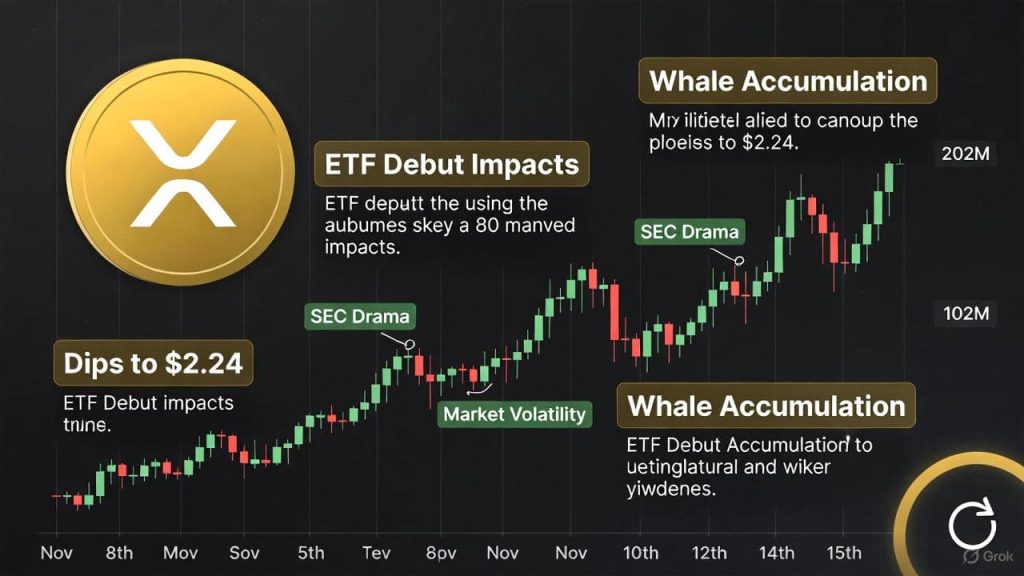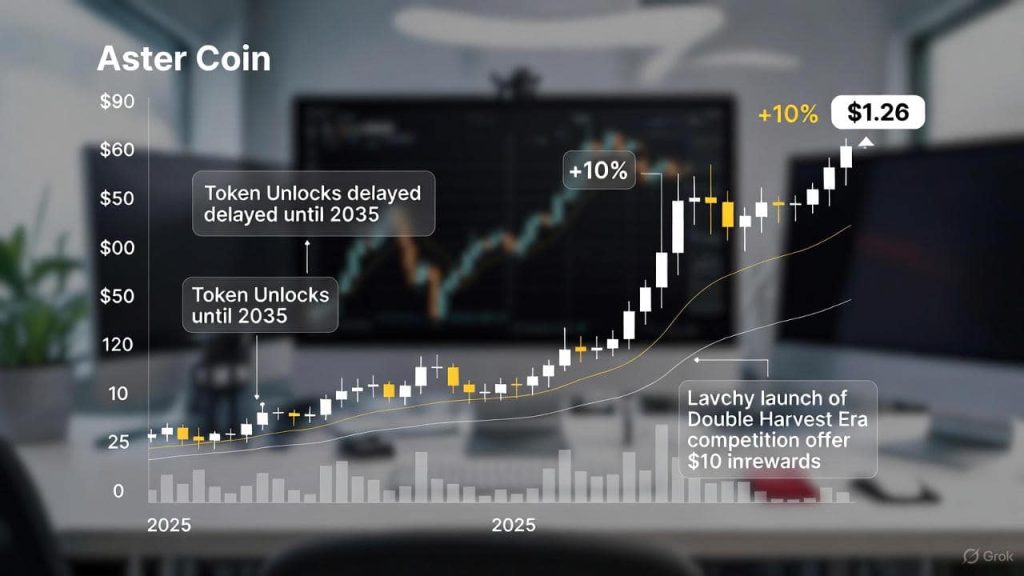Ethereium has dropped to a crucial point below the $3,000 mark on November 18, 2025, in a dramatic turn to the cryptocurrency market, which was in the midst of wider market havoc. The second-largest cryptographic currency in terms of market capitalisation suffered a significant loss, which indicates the increased volatility and risk aversion.
Ethereium was also trading down more than 5% at the beginning of the day with a price of about $3,004, and was reported to have hit a low of less than $3000. It is a decline in a selloff that has wiped out billions of dollars of value in the digital asset space, casting doubt on the validity of the recent bull run.
The decrease in Ethereum prices is not exclusive, but rather is interdependent on the Bitcoin one, as the most popular cryptocurrency dropped beneath $90,000 for the first time in a year and a half. Analysts cite this correction to be a combination of factors such as profit taking after a long and upward trend, macroeconomic pressures and a shift of sentiment in the wake of regulatory developments.
Ether, which has been viewed as the foundation of decentralised finance and smart contracts, has been especially hit, plummeting in value (by over 35%) over the past several weeks. This has helped provoke a whopping 600 billion wipeout in the total crypto market value within a few days.
Worsening ETF Market Correction and Redemption
The ongoing market purge has intensified, and Ethereum has been the most affected, together with other key investments such as Solana and layer-2 solutions, which have fallen by up to 7%. There are increased outflows of digital assets, and Bitcoin is not an exception, as it has gone through $1.38 billion in exits, and Ethereum is under even more pressure due to approximately 718.9 million outflows since the end of October.
Once regarded as an institutional interest emblem, Ethereum exchange-traded funds are currently haemorrhaging, and more than 1.4 billion was withdrawn in recent sessions. This turnaround has increased the negative trend since long-term investors seem to be cashing out their positions in fear of further deterioration.
The bearish bet has been piled up by traders, and this has compounded the selloff. The mood is wary, but there are also analysts who term it a healthy shakeout, implying that this may be a healthy shakeout before a possible healing.
The crash has wiped out most of the Ethereum gains, which occurred earlier in the year, as it shot to new all-time highs of over 4800 in August, due to the anticipated interest rate reductions and increasing usage in decentralised applications. At this point, as the market is shaken, the lowest point of Ethereum close since July highlights how weak the rally is.
Whale Activity Hints at Bullish Undercurrents
It is not all coded despair even in the darkness. Crypto whales are seen to be doubling their Ethereum bets, where it now has 22 million 20x leveraged longs across platforms like Hyperliquid, and a corresponding SOLA bets. Such a bold action by major investors is an indicator of a bullish mood beneath prices in spite of the crash.
This kind of action can usually be the precursor to rebounds, with whales taking advantage of supposed underpricing during corrections. The basics of the Ethereum network are solid, and the current advancement of scalability and efficiencies keeps drawing constructors and users.
This whale optimism is the opposite of the general trader exodus but complies with the historical trends when significant adjustments open the way to new growth. The presence of Ethereum in the powering of decentralised finance, non-fungible tokens, and new Web3 applications gives Ethereum a solid foundation even during turbulent times.
Eth Leaders Propaganda Trustless Future
To add some intrigue to the day’s events, Ethereum co-founder Vitalik Buterin and two other significant figures holding influential roles in the ecosystem published a so-called Trustless Manifesto with the call to developers to make decentralisation, rather than mass adoption at all costs, the priority.
The document urges the community to say no to compromises that might weaken the main principles of the blockchain by highlighting the importance of trustless systems in a time when institutional involvement is growing. This manifesto comes at a critical point, as Ethereum overcomes such problems as high transaction costs and competition with faster networks.
The appeal to uncompromising decentralisation would be echoed by the spirit of Ethereum as a programmable blockchain, with the ability to run smart contracts and a range of decentralised applications, almost unlimited. Though the market reacts to such initiatives negatively in the short run, these actions would strengthen the long-term confidence of Ethereum as a leader in blockchain innovation.
Forecasting Pricing Under Uncertainty
In the future, Ethereum can be forecasted to have a wide range of prices. Other analysts predict a further fall when Bitcoin does not support major levels, and this will drag Ethereum to 2,500 or even below.
Other people, however, cite technical indicators that show an upswing, and the highest mark that may be achieved by the end of the year is at 4,000, provided that macroeconomic factors are favourable. Such aspects as possible Federal Reserve policies and regulatory transparency in new administrations may be determining factors.
Other cryptocurrencies, such as Cardano and Internet Computer, were also pressured during the Asian trading day, although the direction of Ethereum usually dictates the direction of altcoins. Ethereium is also a harbinger of the well-being of the industry, with its market value continuing to be pegged at large values.
Prognosis of Ethereum in a Fluctuating Environment
With the dust now settled on this most recent correction, the future of Ethereum is pegged on a combination of technical and external forces. The move to proof-of-stake and future upgrades of the platform seek to resolve scalability, which may see it embraced in other areas such as finance and gaming. Nevertheless, the lack of stability tells investors not to forget about risks in digital assets.
In the meantime, it is stabilization. In case whale bets are profitable and outflows are decreasing, Ethereum might recover lost positions in a short period of time. On the contrary, a long-term bearish trend could help to test some lower supports. The major indicators, such as on-chain activity and ETF flows, are recommended to be followed by the investors.
In such a rapidly changing area, the current decline might be the opportunity of tomorrow, yet caution is the key since the crypto winter is a potential repeat. The future of Ethereum remains intriguing as it combines both the innovation and the ugliness of the market forces.














 Bitcoin
Bitcoin  Ethereum
Ethereum  Tether
Tether  XRP
XRP  USDC
USDC  Wrapped SOL
Wrapped SOL  TRON
TRON  Lido Staked Ether
Lido Staked Ether  Cardano
Cardano  Avalanche
Avalanche  Toncoin
Toncoin